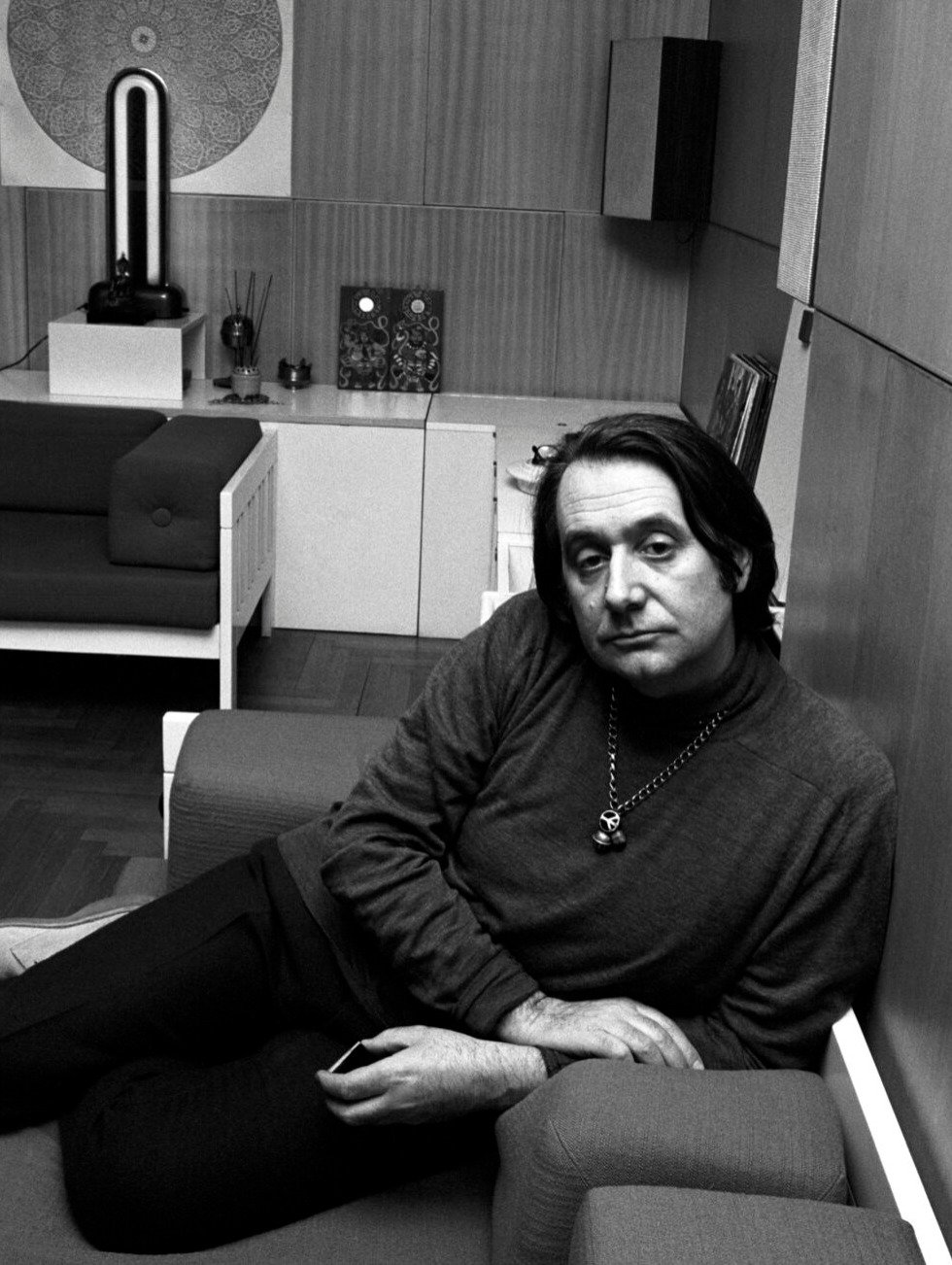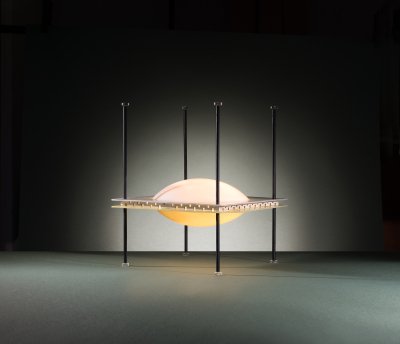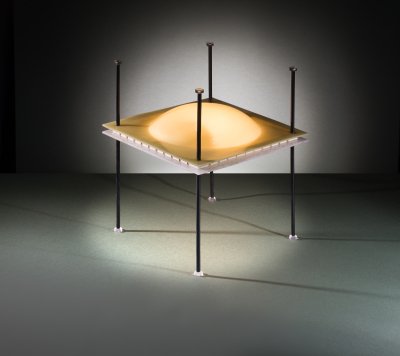Ettorre Sottsass
Ettore Sottsass (1917–2007) was one of the most influential Italian architects and designers of the 20th century, celebrated for transforming design by infusing it with emotion, culture, and experimentation. Born in Innsbruck and trained in architecture in Turin, he began his career after World War II working on architectural projects and furniture. His pivotal breakthrough came in 1958 when he became a consultant for Olivetti, where he created functional yet aesthetically and culturally resonant objects. Among them, the iconic Valentine typewriter (1969), designed with Perry King, became a symbol of Pop design and democratic creativity in the 1960s.
Throughout his career, Sottsass rejected the rigid functionalism inherited from modernism, favoring an approach in which forms, colors, and materials carried symbolic and emotional value. He experimented across a wide range of disciplines—ceramics, glass, furniture, jewelry, architecture, and photography. His work of the 1960s and 1970s explored themes such as the relationship between humans and objects, the rituality of daily life, and the spiritual dimension of design.
In 1981, Sottsass founded the Memphis collective in Milan, a decisive turning point in the history of design. With its bold colors, eccentric geometric forms, and use of unexpected materials such as plastic laminates, Memphis challenged conventional notions of good taste and introduced a radical visual language that was playful, provocative, and instantly influential. The movement quickly gained international recognition, leaving a lasting impact not only on furniture design but also on fashion, popular culture, and architecture.
Following the Memphis experience, Sottsass established Sottsass Associati, a multidisciplinary studio through which he broadened his practice to architecture and holistic design projects, while continuing to develop more personal creations imbued with spirituality and poetic sensibility. Until his death in 2007, Sottsass remained a towering figure in design, remembered for redefining the role of objects in contemporary society and for introducing storytelling, pleasure, and creative freedom into the design vocabulary.




